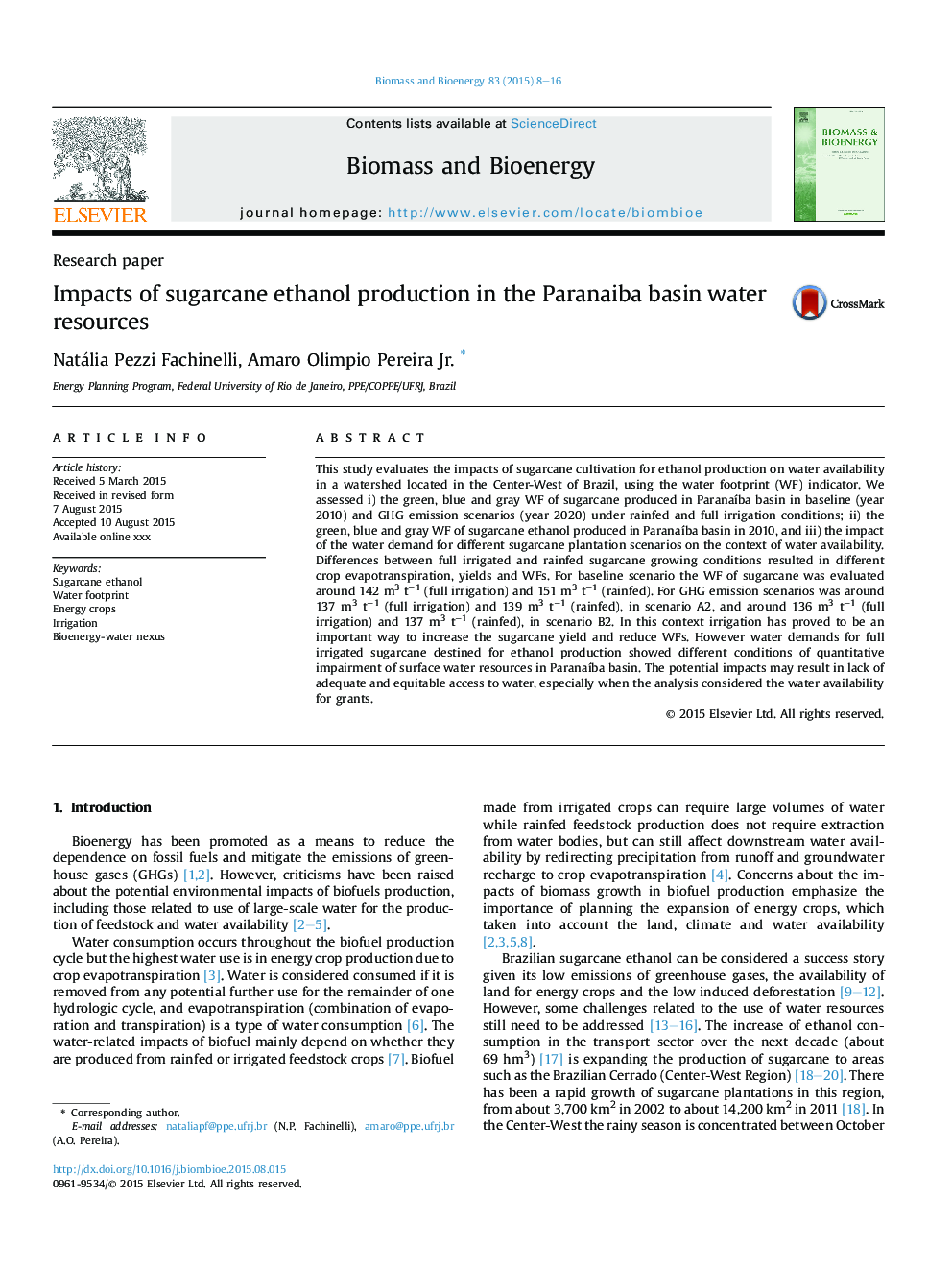| Article ID | Journal | Published Year | Pages | File Type |
|---|---|---|---|---|
| 7063592 | Biomass and Bioenergy | 2015 | 9 Pages |
Abstract
This study evaluates the impacts of sugarcane cultivation for ethanol production on water availability in a watershed located in the Center-West of Brazil, using the water footprint (WF) indicator. We assessed i) the green, blue and gray WF of sugarcane produced in ParanaÃba basin in baseline (year 2010) and GHG emission scenarios (year 2020) under rainfed and full irrigation conditions; ii) the green, blue and gray WF of sugarcane ethanol produced in ParanaÃba basin in 2010, and iii) the impact of the water demand for different sugarcane plantation scenarios on the context of water availability. Differences between full irrigated and rainfed sugarcane growing conditions resulted in different crop evapotranspiration, yields and WFs. For baseline scenario the WF of sugarcane was evaluated around 142 m3 tâ1 (full irrigation) and 151 m3 tâ1 (rainfed). For GHG emission scenarios was around 137 m3 tâ1 (full irrigation) and 139 m3 tâ1 (rainfed), in scenario A2, and around 136 m3 tâ1 (full irrigation) and 137 m3 tâ1 (rainfed), in scenario B2. In this context irrigation has proved to be an important way to increase the sugarcane yield and reduce WFs. However water demands for full irrigated sugarcane destined for ethanol production showed different conditions of quantitative impairment of surface water resources in ParanaÃba basin. The potential impacts may result in lack of adequate and equitable access to water, especially when the analysis considered the water availability for grants.
Related Topics
Physical Sciences and Engineering
Chemical Engineering
Process Chemistry and Technology
Authors
Natália Pezzi Fachinelli, Amaro Olimpio Jr.,
